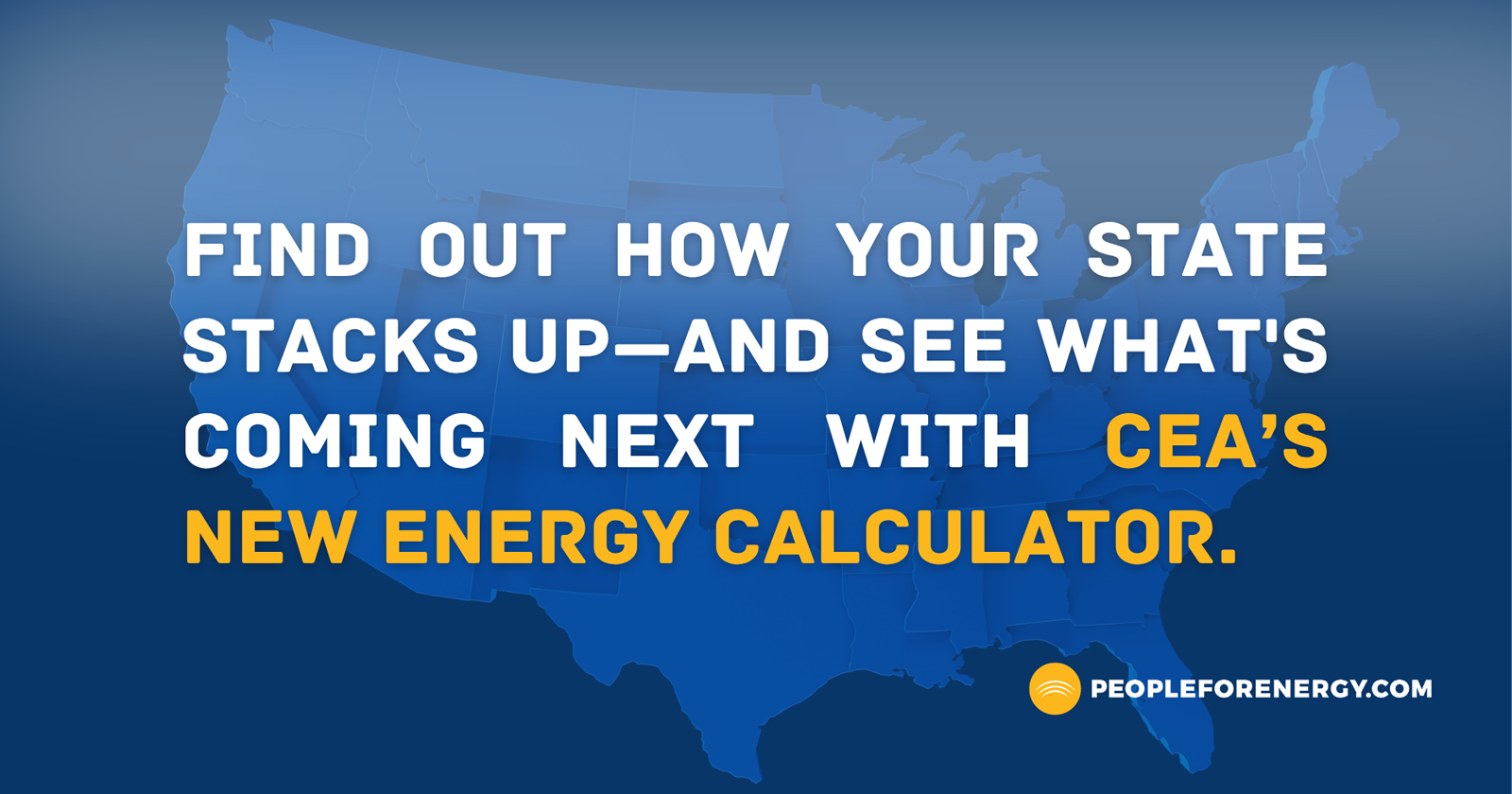Ever wonder how your energy bills stack up to other states? Or how rising electricity and gas prices ripple through your grocery bill or small business expenses? With Consumer Energy Alliance’s new Energy Calculator, you can finally get a clearer, more relatable view of energy costs.
Putting the Power of Information in Your Hands
Energy is one of the largest household expenses—but it’s also one of the least understood. CEA’s Energy Calculator makes it easy for consumers, families, and small businesses to:
- Compare electricity and natural gas prices across every U.S. state
- See estimated yearly energy costs based on where you live
- Understand how your state’s policies and energy mix affect your bottom line
It’s user-friendly and free—designed to help everyday Americans understand what they’re really paying for energy and how those costs compare nationally.
Why Energy Cost Awareness Matters
Electricity and gas prices don’t just affect your utility bill. They influence the cost of nearly everything you buy—from groceries to school supplies to local services. When energy prices rise, so does the cost to produce, ship, store, and sell goods. But that’s often invisible to the average consumer.
The Energy Calculator is designed to change that.
- Planning your monthly budget? Knowing your state’s energy trends helps you stay ahead of cost spikes.
- Operating a small business? State-level comparisons offer insight into competitiveness and potential savings.
- Worried about food prices? You’ll soon be able to see how much of your grocery bill is directly linked to energy costs.
More Insights Coming Soon
This tool is just the beginning. In the near future, the Energy Calculator will expand to show how much energy costs contribute to the prices of everyday items—like eggs, bread, and milk. For example:
How much of the cost of a dozen eggs is driven by electricity, transportation fuel, or fertilizer costs—all of which are energy-dependent?
These additions will help you connect the dots between energy policy and your daily expenses. Whether you’re shopping for dinner, running a farm, or managing household bills, you’ll see how energy affordability touches every part of life.
Behind the Numbers: Energy Policy and Consumer Impact
It’s not just about data—it’s about decisions. What we see in our energy bills and store receipts reflects the choices being made at the local, state, and national levels:
- Dispatchable energy sources like natural gas and nuclear help keep prices stable, especially during extreme weather.
- An overreliance on intermittent sources without sufficient backup can drive up costs and lead to reliability risks.
- Smart, balanced energy policies protect consumers from price shocks and supply disruptions.
By comparing state-level energy costs now—and soon, by understanding their share in everyday prices—you’ll be better equipped to advocate for energy solutions that work for families, businesses, and the broader economy.
Take the First Step: Explore Your State’s Costs Today
CEA’s Energy Calculator is about transparency, clarity, and action. We believe everyone should understand how energy impacts their life—and have a voice in shaping policies that prioritize affordability and reliability.
Try the tool today and start seeing your energy costs from a whole new angle.
Let’s make energy policy something that works for consumers—not something that happens to them.

